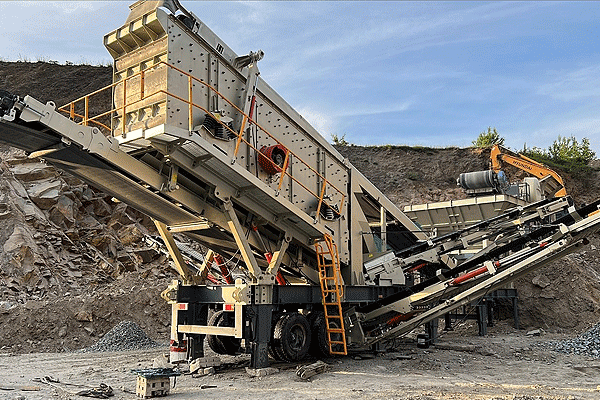Common Types of Crushers Used in the Mineral Processing Industry
The efficient reduction of large, raw mined ore into manageable fragments is a critical first step in mineral processing. This primary size reduction is achieved through various types of crushers, each designed for specific stages and material characteristics. Understanding the common crusher types is essential for optimizing the comminution circuit.
Primary Crushers: The First Line of Reduction
Primary crushers handle the initial stage of size reduction, directly processing run-of-mine material that can be as large as several feet in diameter. Their primary function is to reduce this massive feed to a size suitable for subsequent handling and processing by secondary crushers. The two most prevalent types are jaw crushers and gyratory crushers.
A jaw crusher operates by compressing material between a fixed and a reciprocating jaw plate. As the movable jaw presses against the fixed one, the rock is crushed until it becomes small enough to fall through the bottom opening. Gyratory crushers function similarly but feature a central gyrating spindle within a concave hopper. They are renowned for their high capacity and ability to handle very abrasive and hard ores, often making them the preferred choice for high-tonnage mining operations.
Secondary Crushers: Refining the Product
Once material has been processed by a primary crusher, secondary crushers take over to further reduce its size. The goal at this stage is to produce a more uniform product shape and size, preparing it for final grinding in mills. Cone crushers are the dominant technology in this category.
A cone crusher operates on a similar principle to a gyratory crusher but on a smaller scale and with some key differences in speed and stroke. Material is crushed between a rotating mantle and a stationary concave bowl. Cone crushers are highly effective at producing fine materials and are valued for their efficiency and consistent performance. They can be fine-tuned by adjusting the gap between the mantle and concave, allowing operators precise control over the final product’s specifications.
Tertiary and Quaternary Crushers: Achieving Final Sizes
For applications requiring very specific, fine product sizes—often as feed for grinding mills—tertiary and quaternary crushing stages are employed. These stages further refine the output from secondary crushers. While cone crushers are frequently used here as well, other specialized equipment comes into play.
Impact crushers are sometimes utilized in these final stages, particularly for less abrasive materials. They operate by hurling feed material against hardened impact plates or rocks within a chamber, relying on high-speed impact forces to achieve fragmentation. This method can produce well-shaped, cubical products but may result in higher wear when processing very hard or abrasive ores compared to compression-based machines like cone crushers.
Selection Criteria: Matching Machine to Material
Choosing the correct type of crusher is not arbitrary; it depends on several critical factors related to both the material and operational goals. Key considerations include feed size, required product size, material hardness and abrasiveness, moisture content, and desired capacity.
Hard, abrasive ores like granite or iron ore are best suited for compression crushers like jaw or cone types. Softer or less abrasive materials may be efficiently processed by impact-based systems. Furthermore, operational costs such as energy consumption and wear part replacement frequency must be weighed against capital investment to determine the most economical solution for a specific mineral processing plant’s needs.
Conclusion
The journey from raw ore to a finely ground concentrate begins with robust and efficient crushing machinery. From primary jaw and gyratory giants that accept massive feed to precision cone and impact units that deliver final sizing specifications each type plays an indispensable role By carefully selecting equipment based on material properties producers can ensure optimal efficiency throughput reliability throughout their entire mineral processing operation
